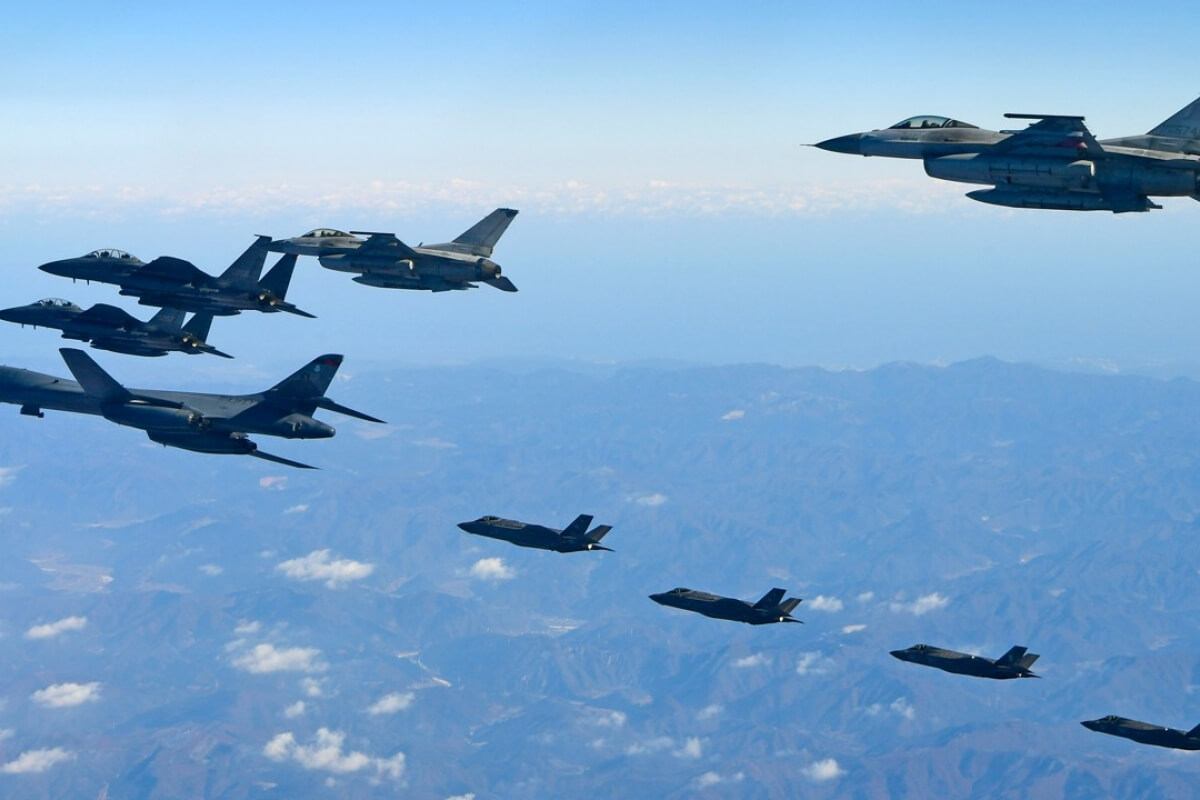South Korea has reportedly established a new air force unit that will be responsible for the operations of the key reconnaissance assets.
The first reconnaissance wing, 39th Reconnaissance Wing, is located at an airbase in Chungju. It will be able to operate five types of reconnaissance assets of the air force, including the RQ-4 Global Hawk high-altitude unmanned surveillance aircraft, RF-16 and RC-800 Geumgang reconnaissance aircraft as well as a medium-altitude unmanned aerial vehicle currently under development with local technology.
Previously, the reconnaissance assets had been run by the 39th reconnaissance aircraft group, which is assigned to the 19th Fighter Wing. It was later reordered and its status was elevated to the reconnaissance wing.
This announcement has coincided with the news of North Korea building two experimental submarines, one of which is capable of firing Intercontinental Ballistic Missiles (ICBMs). This information was released by South Korea's National Intelligence Service that has been monitoring the North's large submarine fleet.
“One is a modified Romeo Class and the other is a new medium-large size one.” said Ha Tae-keung, an opposition party lawmaker on parliament’s intelligence committee, who was part of the closed-door briefing.
Even though North Korea has been subject to U.N. Security Council sanctions since 2006, over its nuclear and ballistic missile programs, the international sanctions have not stopped it from experimenting with expanding and advancing its defence artillery.
North Korean leader Kim Jong Un and U.S. President Donald Trump have met three times since 2018, but failed to make progress on making Pyongyang give up its nuclear weapons and North Korea's demands for an end to sanctions.
Earlier this year, North Korean forces shot to death, then burned the body of a South Korean official affiliated to the Ministry of Oceans and Fisheries. The inspector was reported to be missing while working on an inspection boat near the border island of Yeonpyeong. North Korea said that the shooting was a self-defensive measure amid concerns about the spread of the novel coronavirus.
Reportedly, North Korean leader Kim Jong Un also apologized for the killing of a South Korean official, calling the shooting death “unfortunate,” South Korea’s presidential office said. This is extremely rare move on part of the North Korean administration and helped in diffusing the cross-border tensions to an extent.
In July last year, North Korean state media had earlier broadcasted Kim Jong-un visiting a submarine construction site. When analysts viewed the footage, they suggested the size of the vessel indicated it was designed to carry ballistic missiles.
Following this footage, a military parade was hosted to celebrate the founding of North Korea's communist party in Pyongyang, on October 10 this year, wherein North Korea showcased a total of 76 missiles in nine different types. This showcase took place for the first time in two years and included the country’s long-range weapons, capable of travelling many hundreds of miles.
This has furthered military tensions between the North and South, which have more or less remained frequent since the Korean Armistice Agreement was signed in 1953.

